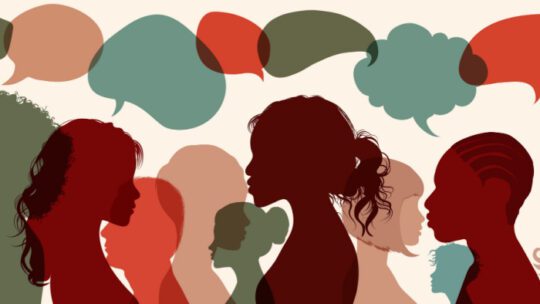
Angela Carter said it most eloquently: Language is power. And how those of us in the media industry choose to wield it has a proven cultural impact that we must acknowledge.
In a report from the Institute for Public Relations and The Wakeman Agency, 97% of respondents agreed that the use of exclusionary language can influence or reinforce power dynamics in the workplace. Using outdated and exclusionary language in contemporary communications negatively affects minority groups and adversely influences the public if it continues to be brushed aside.
Even without standardized programs in place, industries can still recognize the impact of a word and make a determination of whether it is worthy of continued widespread use.
For instance, the term “Chinese wall” has become a topic of controversy in recent years. The phrase refers to an information barrier aimed at removing conflicts of interest between editorial content and financial backing. Communications agencies also use the term to describe the separation of information flow between two competing clients.
In 1988, a California judge objected to the phrase on the grounds that it had an “ethnic focus,” which many would consider “a form of linguistic discrimination.”
This is especially relevant in the communications industry, as we have a responsibility to limit the biases that infiltrate certain areas of public language from more outdated ways of thought. It is our duty to discuss the potential consequences of a particular word or phrase. Thus, while the popular use of the term “Chinese wall” might seem relatively benign to some, the potential for negative or offensive connotations has led many to prefer the term “ethical wall” or “ethical screen” instead.
We as communications professionals can begin here by changing the language that defines the way we work. Our organizations serve as incubators for the public narrative, and changing the way we talk about our business is key to engendering an inclusive narrative within the next generation of communications professionals.
Implementing New Standards
Two years ago, the Associated Press changed its writing style guide to capitalize the “b” in the term “Black” when referencing people in racial, ethnic, or cultural contexts. The updated style standard is one step toward building inclusive language into the framework of professional public writing and was accompanied by APA’s unveiling of its new inclusive language guidelines.
But how do we effectively implement these inclusive standards, and how can we best communicate and connect with community stories in ways that bring diverse audiences closer together?
As business communications professionals, we have a responsibility to take extra care with the “who” in the story. When it comes to best practices in writing for businesses and consumers, there is no such thing as a minor decision. There are consequences to every story you tell and every word you use to tell it.
Continued Education
While language should not be policed, it should be polished, enriched, and improved. In various other industries, continued education is a requirement for certain professions such as law, medicine, and engineering for individuals to stay up to date on current practices. We should think of the fabric of our profession in much the same vein, continually seeking to grow and change in conjunction with societal developments.
Organizing review sessions when new guidelines are implemented, supporting employee participation in professional development events, and creating accessible learning opportunities for professionals in our industry as language evolves are all simple steps an agency can take that can lead us to a more equitable and inclusive industry.
And yet, while updated guidelines, training, and language’s specific and structural changes can be important steps in bridging knowledge gaps and cultivating a more equitable industry, diversity and inclusion within the industry itself is still a significant issue that must also be addressed.
With minimal minority representation in the newsroom, we as communications professionals must take individual steps in finding constructive ways to tackle the diversity problem in the media, such as building our own peer-driven communities across the industry, providing safe spaces for exploring sensitive topics in DEI, proofing our work beyond surface level errors and evaluating writings through a lens of inherent bias, seeking diverse writers and editors to engage with and learn from, and sharing best practices in media as its audience evolves alongside us.
From a market perspective, diversity is a necessity in the modern media environment. Providing inclusive content and maintaining a diverse workforce are imperative to a media platform's longevity. Recent studies suggest the new generation of readers wants content that reflects their experiences and perspectives. How can any platform assume the burden of accurately reflecting our world, without listening to those who reside in it?
The face of the communications industry is changing. Lack of access to employment and education prevents the communications industry from becoming more diverse and inclusive, and in doing so, prevents it from becoming more reflective of the public as a whole.
And while linguistic choices may not seem to hold as much weight in the broader discussion of inequality, it is unrealistic to assume we can discuss the face of this industry without also discussing its voice. The responsibility held by those of us in the communications profession is often overlooked in the chaos of the 24-hour news cycle.
Still, media professionals have a unique perspective not only on how language reflects larger social and political trends but also its influence on individuals. In fact, this quiet power is something our industry must consider and wield carefully on a daily basis —it’s an integral part of one of the greatest challenges that we face in our work.
Hollin Nies is Communications Strategist at Vansary.
Liang Zhao is Founder and CEO at Vansary.
